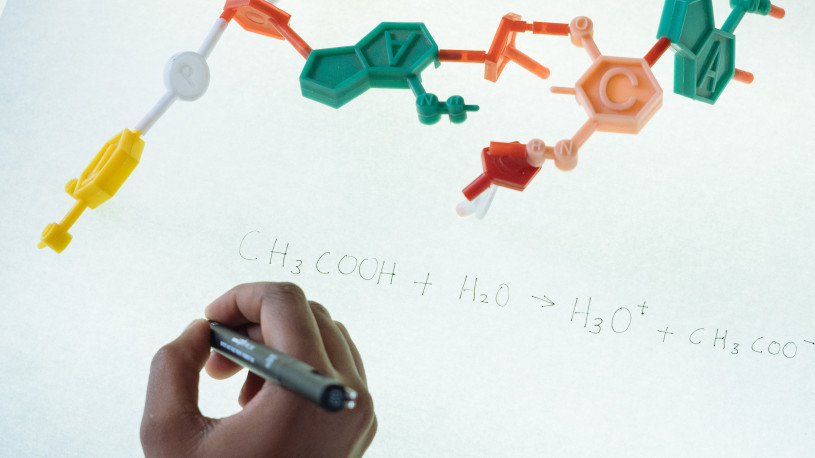-
Panasonic Reveals Bendy Battery
 Continue Reading
Continue ReadingPanasonic has revealed a bendable battery that has paved the way for a wide range of flexible electrical products, such as smart clothing, fitness bands and even a scrollable smart phone.
The discovery is based around a standard lithium ion battery that, as the BBC reports, has its “active ingredients painted onto the inside, that is itself then wrapped in an aluminium/plastic mix for the shell”.
Exhibiting the new design at the Japanese technology fair Ceatec, analysts believe that whilst the charge is not yet big enough to power anything practical (only 17.5 milliamps), the design could lead to countless other technologies. As Ben Wood, an analyst with research company CCS, said when talking to the BBC: “I’d wager that Panasonic’s new technology is just one piece of a more complex jigsaw, and it will be some time before we see truly disruptive devices emerging.”
This is especially true as Panasonic claims that bending the battery does not affect performance, and measures only 0.55mm thick with a maximum ‘bend’ of 25 degrees.
The battery is expected to be handed over to manufacturers some time at the end of October, and maybe available to the public in 2018,
You can learn more about Panasonic’s new battery via the BBC report here.
-
Advancing our Understanding of Plastic Coatings with Nanoparticles
 Continue Reading
Continue ReadingModern polymers and plastics frequently contain nanoparticles, miniature particles that measure less than 100 nanometers wide. These tiny pieces of silver, silicon or similar chemical feedstock, are used to improve a polymer’s electrical, mechanical or durability performance. However, little research has been done to find out what happens to these nanoparticles when they are exposed to heat, humidity, UV rays, and rain, over time.
Do nanoparticles impact the environment? Do they pose a health risk to humans or wildlife? How do they degrade and how does this impact the polymer coating’s effectiveness?
Well now a research team from the National Institute of Standards and Technology (NIST) has begun asking all these questions. As the institute’s own website reports, “The goal of this study is to investigate the process and mechanism of surface degradation and potential particle release from a commercial nanosilica/polyurethane coating under accelerated UV exposure.”
The research was based around experiments conducted in the NIST SPHERE (Simulated Photodegradation via High-Energy Radiant Exposure), a piece of equipment described as, “a hollow, 2-meter (7-foot) diameter black aluminum chamber lined with highly UV reflective material.” In this way, the team was able to recreate 10 to 15 days of outdoor UV exposure with just one day in the SPHERE.
For a subject matter, the study used a commercially available polyurethane coating containing silicon dioxide nanoparticles, and exposed the coating to intense UV radiation for the equivalent of 100 days. As the research team explains, “All samples were then weathered at a constant temperature of 50 degrees Celsius (122 degrees Fahrenheit) with one group done in extremely dry conditions (approximately 0 percent humidity) and the other in humid conditions (75 percent humidity).”
Publishing their results in the Journal of Coatings Technology and Research, the study states that, “The results demonstrated that the added silica nanoparticle solution decreased the photodegradation rate (i.e., stabilization) of the commercial PU nanocoating.”
Meanwhile the online scientific journal Phys.org reported on the results as follows, “Both sets of coating samples—those weathered in very low humidity and the others in very humid conditions—degraded but released only small amounts of nanoparticles. The researchers found that more silicon was recovered from the samples weathered in humid conditions and that nanoparticle release increased as the UV exposure time increased. Microscopic examination showed that deformations in the coating surface became more numerous with longer exposure time, and that nanoparticles left behind after the coating degraded often bound together in clusters.”
To date, this study is really only the start of a series of experiments into how the weather effects polymer coatings that contain nanoparticles, the results from which will aid the entire polymer coating industry. As NIST research chemist and lead author Deborah Jacobs, makes clear when she says, “These data, and the data from future experiments of this type, are valuable for developing computer models to predict the long-term release of nanoparticles from commercial coatings used outdoors, and in turn, help manufacturers, regulatory officials and others assess any health and environmental impacts from them.”
With nanoparticles playing an increasingly important role in the development of polymers and the coatings industry, further research is needed to find out more about the long term effects of these vital chemical feedstocks. Only then will chemists be able to measure the impact of plastic coatings on the environment, or even to understand how the environment impacts plastic coatings.
Photo credit: NIST & Polyurethanes 101
-
An All-in-One Liquid Battery/Solar Cell
 Continue Reading
Continue ReadingProblem: How do we power the economy with solar power at night?
Solution: Store the energy from the day in large batteries.
Problem: Modern lithium-ion batteries are far too expensive to store power for the grid.
Solution: Integrate the battery into the solar cell.
At least, that is what is being proposed in a recently published study by Prof Song Jin of the University of Wisconsin-Madison. For together with his research team, he has created a device that skips the step of making electricity, and instead stores the energy directly in the battery’s electrolyte.
This has been possible as the researchers used a ‘redox flow battery’. RFB’s are different because, as the online journal Science Daily explains, “Unlike lithium-ion batteries, which store energy in solid electrodes, the RFB stores chemical energy in liquid electrolyte.” By making this change, the team has been able to create a, “… single device that converts light energy into chemical energy by directly charging the liquid electrolyte. In the new device, standard silicon solar cells are mounted on the reaction chamber and energy converted by the cell immediately charges the water-based electrolyte, which is pumped out to a storage tank.”
The research team also claim that discharging the battery is very simple, with Prof Jin stating that, “We just connect a load to a different set of electrodes, pass the charged electrolyte through the device and the electricity flows out.”
Whilst the idea of attaching a redox flow battery to a solar cell is not new, indeed models are already available on the market, what is different here is, as Prof Jin explains, “We now have one device that harvests sunlight to liberate electrical charges and directly changes the oxidation-reduction state of the electrolyte on the surface of the cells. [By doing this] We are using a single device to convert solar energy and charge a battery. It’s essentially a solar battery, and we can size the RFB storage tank to store all the energy generated by the solar cells.”
The results have been published in the scientific journal Angewandte Chemie International Edition, where the researchers give detail to their discovery describing it as, “An integrated photoelectrochemical solar energy conversion and electrochemical storage device is developed by integrating regenerative silicon solar cells and 9,10-anthraquinone-2,7-disulfonic acid (AQDS)/1,2-benzoquinone-3,5-disulfonic acid (BQDS) RFBs. The device can be directly charged by solar light without external bias, and discharged like normal RFBs with an energy storage density of 1.15 Wh L−1 and a solar-to-output electricity efficiency (SOEE) of 1.7 % over many cycles. The concept exploits a previously undeveloped design connecting two major energy technologies and promises a general approach for storing solar energy electrochemically with high theoretical storage capacity and efficiency.”
Whilst the new device has yet to be scaled up to an industrial scale, it theoretically seems a very possible option. As Prof Jin states that, “”The RFB is relatively cheap and you can build a device with as much storage as you need, which is why it is the most promising approach for grid-level electricity storage.” Jin continues to describe the devices many advantages, saying, “The solar cells directly charge the electrolyte, and so we’re doing two things at once, which makes for simplicity, cost reduction and potentially higher efficiency.”
Better still, the model used in the study contained no expensive rare metals, instead the tank that makes up the liquid electrolyte is filled with organic molecules. However, the team is continuing to search for, “electrolytes with larger voltage differential, which currently limits energy storage capacity.”
This discovery is very promising for the solar energy industry, as not only does open the door to improved solar cell efficiency, but also increases solar energy’s adaptability for use on the grid. Furthermore, as solar energy becomes a more widely used form of power generation, then it is possible that this device will become the standard battery for all future solar panel designs.
Photo credit: David Tenenbaum/UW-Madison

